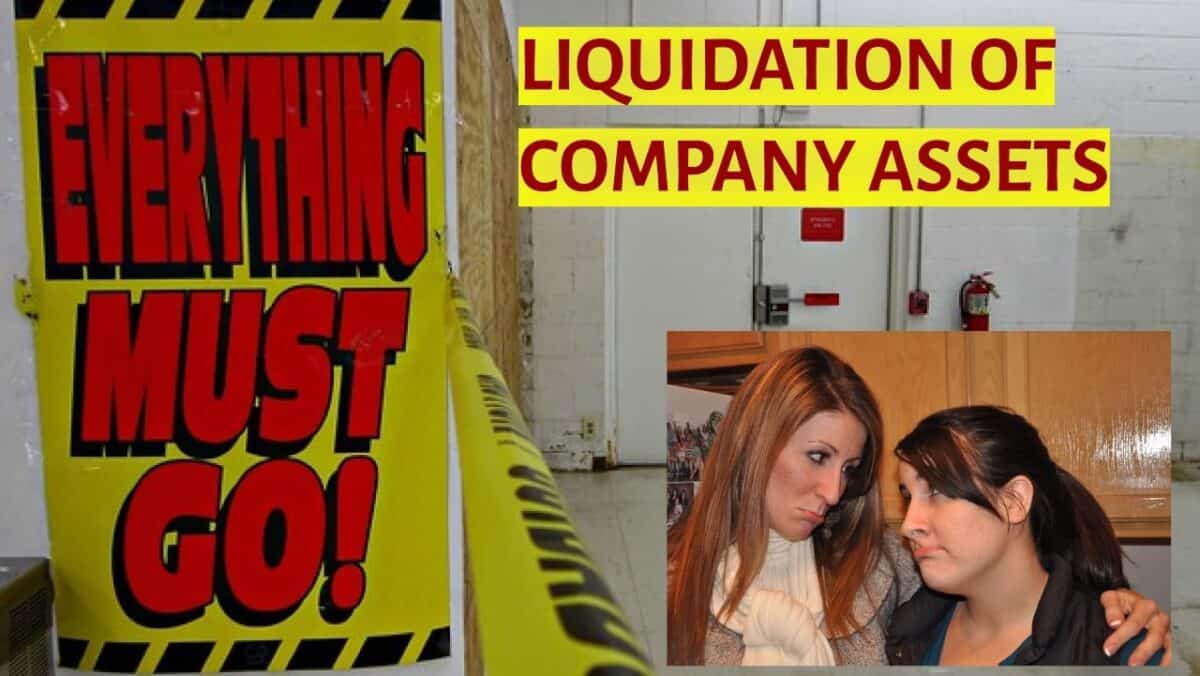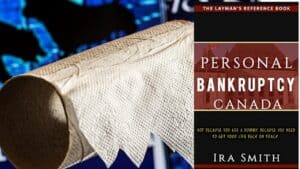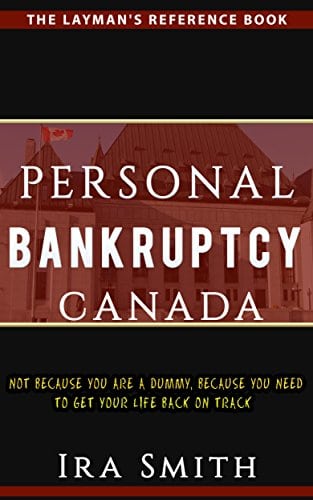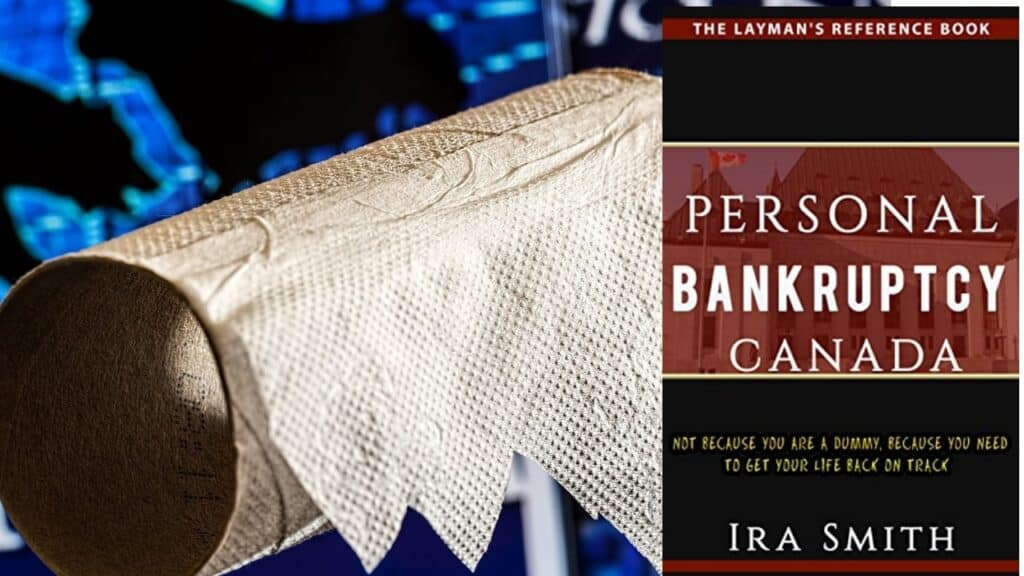Liquidation of company assets: What is the liquidation of a company?
In business and the law, liquidation is the process of bringing a company to an end and distributing its assets to creditors. This usually happens when a company is financially solvent and can pay all of its debts after all its assets are sold or collected.
When a product is not selling well, retailers may choose to liquidate it by selling it at a discounted price. This process called a liquidation sale can help them clear out slow-moving inventory. This is not the process I am talking about today.
If you want to learn more about the types of liquidation in Canada, then you’ve come to the right place. In this Brandon’s Blog, I will explain everything about the liquidation of company assets and give you a real-life example that my Firm is currently involved in. This real case is an example of what can be done when shareholders who originally agreed to a voluntary liquidation (defined below) can no longer agree on the liquidation of company assets or anything else, even how to pay them the cash the shareholders are entitled to receive!
Why would a company want to have liquidation of company assets?
There are a few reasons why companies pick a liquidation process, including:
The business is solvent yet no longer practical to operate
Possibly time has actually passed the business by. Technological adjustments have made the products or services the limited company offers unneeded as well as no longer relevant. The shareholders want to call it quits now, sell off the corporate assets and properties, repay creditors and also distribute the leftover funds to the shareholders.
The shareholders do not intend to or think it is possible to convert the business to make it viable again. They do not feel it deserves the investment of time and resources, as well as to endure ongoing losses in turning the business around so that it ends up being pertinent again.
Shareholder disputes
The shareholders in a private entrepreneurial company no longer get along. The dissident shareholder(s) cannot or refuse to buy out the remaining shareholders or vice versa. Alternatively, certain shareholders are willing to do a buy-out but either cannot agree on the price or balk at paying the amount calculated under the formula prescribed in the shareholder agreement.
The company is not saleable
The limited company’s business is not viable anymore. Nobody wants the company’s products or services and the company never moved forward with new product offerings that are in demand. Therefore, nobody wants to buy the company or its assets. So while it is still solvent, the shareholders decided to realize all the assets, distribute the cash first to pay off all of the company’s debts in full, make a distribution to shareholders for what is left over and formally dissolve the corporation.
To avoid bankruptcy
If the company is not wound up, it will eventually become an insolvent corporation. The shareholders realize that it is much better to now agree to a voluntary liquidation while there still can be a distribution to the shareholders after all the business assets are sold or collected and all creditors are paid in full. The shareholders wish to get this value and avoid a corporate bankruptcy filing.
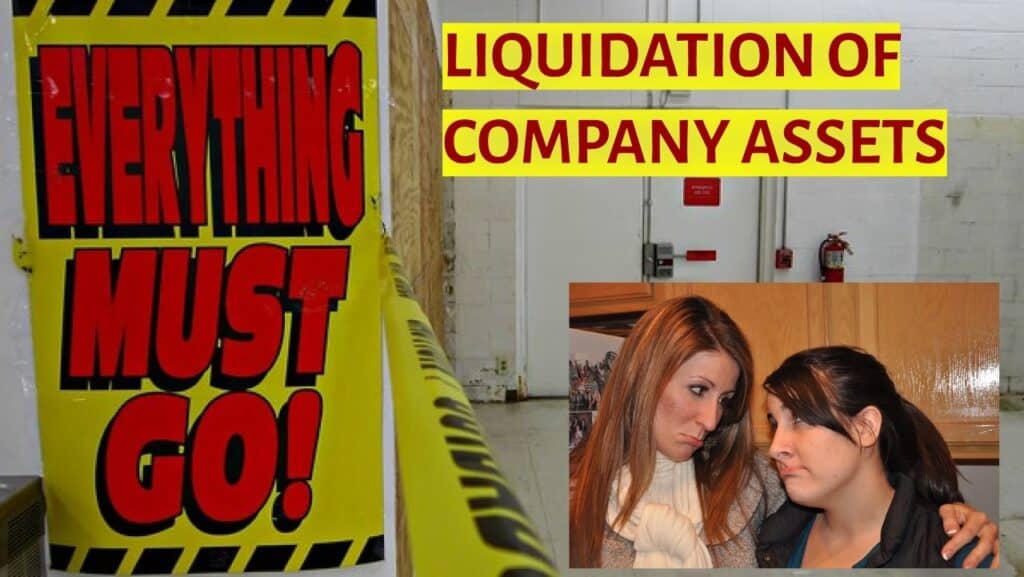
How a liquidation of company assets begins
If shareholders wish to have a dissolution process for a corporation, they may do so by passing a special resolution to begin the liquidation process. In such cases, the company would call a meeting of shareholders in accordance with the corporate bylaws. Shareholders must be given notice of the meeting in advance. Alternatively, a court may make an order for the liquidation of company assets and the winding-up of the corporation. More on this below. This is how the liquidation of company assets and the winding-up of the company begins.
Shareholders will be given notice of the meeting where the special resolution authorizing the dissolution process will be considered. At the meeting, shareholders can vote to approve or disapprove of the special resolution for the dissolution of the company by special resolution.
Liquidation of company assets: What are the 2 types of liquidation in Canada?
When a company is struggling, it’s common to see a sale take place. When this happens, all of the assets of the company may be sold to pay off creditors. This process of selling off the company’s assets is known as “liquidation.” In Canada, there are two main types of liquidation: “compulsory liquidation” and “voluntary liquidation”.
Voluntary liquidation or voluntary dissolution begins with the shareholders agreeing to a special resolution for the liquidation of company assets, the distribution of the cash first to all creditors and then to the shareholders. When the liquidation is completed, the company is then would up.
Compulsory liquidation is when a court order is made directing the liquidation of company assets and the winding-up of the company.
In Canada, the laws under which a solvent company is liquidated depend on the laws under which the company was incorporated. If federally incorporated, then the Canada Business Corporations Act (CBCA) is the relevant statute. If provincially incorporated, then it would be the law of that particular province. In Ontario, it is the Ontario Business Corporations Act (OBCA). This is the statute that I will focus on in this Brandon’s Blog.

Liquidation of company assets: What is the OBCA process for liquidation?
The Ontario Business Corporations Act is a piece of provincial legislation that is designed to govern the formation, administration, and dissolution of corporations in Ontario. In reality, most liquidations filed in Ontario are voluntary. This means that the company shareholders decide to seek liquidation.
Part XVI of the OBCA sets out the process for the liquidation of company assets in Ontario. The OBCA provides a comprehensive framework for the voluntary winding up of corporations. Sections 193 to 205 of the OBCA set out the procedures and requirements for the voluntary winding up of corporations.
As I have previously stated, the OBCA requires shareholders of a corporation to vote for a voluntary winding up of the company as the first step in liquidation of company assets and ceasing business. The shareholders’ requirement is evidenced by a special resolution made at a properly convened meeting of shareholders.
At the meeting, shareholders will appoint one or more people as liquidators of the company. These people may be directors, officers, or employees of the company. Their job will be to wind up the company’s affairs and distribute its property. Shareholders may also provide other instructions at that meeting or at any subsequent meeting.
It’s also common for shareholders to appoint a third party experienced in winding up corporations, like a licensed insolvency trustee. Even though the company isn’t insolvent, shareholders see the advantages of keeping a professional experienced in liquidating assets on board.
A corporation voluntarily winding down will cease carrying out business operations, except where doing so would be beneficial for the winding down process. All transfers of shares, except those made with the approval of the liquidator, taking place after the commencement of the winding down are void.
The OBCA provides for a stay of proceedings when an Ontario company is being liquidated and wound up. After a voluntary winding up has begun,:
- no legal action can be taken against the corporation; and
- no seizure, sequestration, distress or execution can be carried out against the corporation’s assets or property.
You will need the court’s permission before taking any action. The court will then decide what terms to set.
Liquidation of company assets: Special considerations in a compulsory or court-supervised liquidation
The court may dissolve the corporation if:
- If the court finds that the actions or inaction of a corporation or any of its affiliates has resulted in or will result in an outcome that does not consider the interests of any security holder, creditor, director, or officer fairly, it may order the dissolution of the corporation.
- All shareholders agree that dissolution should occur after a specific event, and that event has occurred.
- Proceedings have begun to wind up the corporation voluntarily.
- The court finds that if the actions or inaction of a corporation or any of its affiliates has resulted in or will result in an outcome that does not consider the interests of any security holder, creditor, director, or officer fairly, it may order the dissolution of the corporation.
- It is best for those who would have to contribute to a company’s assets in the event of its dissolution, and for those who are owed by the corporation, that the court supervises the dissolution process.
- The corporation cannot continue its business because of its debts and it is advisable to end its operations other than by bankruptcy.
- The shareholders vote by special resolution to wind up the corporation through a court-supervised process.
Who can apply to the court for a court-supervised liquidation of company assets and the winding-up of the corporation? If you want to dissolve a corporation through a court-supervised process, you can do so by filing an application with the court. Shareholders, a contributory or creditor having a claim of $2,500 or more, or a voluntary liquidator can all apply to have the corporation wound up.
In the section below titled “Liquidation of company assets: Real-life example when voluntary had to become court-supervised” I describe a file that my Firm is involved in the liquidation of two companies, and we were forced to use the right of a voluntary liquidator to apply to the court to turn the voluntary liquidation into compulsory liquidation.

Liquidation of company assets: How does the distribution of assets during liquidation work?
When a company is liquidated, its assets are sold off and the proceeds are distributed to creditors. The distribution of assets is first used to pay off secured creditors, then unsecured creditors, and finally shareholders.
The liquidator first needs to gain an understanding of all of the company’s assets and liabilities. The financial statements and the books and records of the company are a good place to start. The liquidator will put together a plan to collect and sell the assets of the company.
The liquidator then needs to put together a list of all creditors, and identify if they are secured creditors or unsecured creditors. This is necessary because the creditors need to be paid in order of priority. Any remaining funds will then be distributed to the shareholders.
The liquidator will keep company management and shareholders informed every step of the way. The liquidator would be very wise to get management and shareholder approval for all of the liquidator’s decisions. The liquidator will also need to make sure that the preparation of the company’s financial statements and income tax returns are kept current and that all government filings and payments are made on time.
The fee of the liquidator must be agreed to by the shareholders. The OBCA also provides for the court to be able to assess the fee charged by the liquidator. In doing so, the court will no doubt look at the steps and acts of the liquidator that were taken.
These are the main steps that every liquidator must carry out. Even in a compulsory liquidation done by court order, the practical steps involved in the liquidation of company assets are the same.
Liquidation of company assets: Real-life example when voluntary had to become court-supervised
The shareholders of two affiliated companies, each one a private company, passed special resolutions in August 2021 for both companies to begin liquidating their assets, winding up the corporations, and appointing Ira Smith Trustee & Receiver Inc. as the liquidator of both corporations. The desire to wind up both companies came from the very acrimonious litigation between family members.
We were very successful in helping the warring factions, through their respective legal representatives, make adequate provisions so that agreements could be reached in each crucial step of the liquidation process from August 2021 through April 2022. Unfortunately, we hit a snag in May 2022. The shareholders were unable to resolve their impasse due to the pertinent issues regarding the liquidation of both companies. Without court intervention, the stalemate would never end.
We knew that we could still provide value in helping these shareholders, but given their bitter disagreements, it could only be done under a court-supervised compulsory dissolution. Therefore, we prepared a report for the court and first circulated a draft to the stakeholders and their lawyers. We did so for two reasons:
- we wanted to make sure that we did not make any factual errors; and
- by circulating a draft in advance, we gave everyone the chance to consider consenting to our application to turn the voluntary liquidation into a compulsory dissolution.
We then had our legal counsel set up a court date, which they were thankfully able to get for mid-July. All stakeholders consented to the court-supervised liquidation of one of the two companies. One side also consented for the other company to enter a court-supervised process, but the other side opposed it.
The court made an order to convert the voluntary liquidation into a compulsory liquidation for the one private company that all shareholders consented to. It also set a hearing for mid-September, which will allow the opposing party to present their case, and for the consenting party and the liquidator to do the same. This provision in the OBCA allowing a voluntary liquidator to make the court application definitely prevented a less favourable outcome.

Liquidation of company assets: Difference between insolvency and liquidation
There is a big difference between insolvency and liquidation, just as there is a difference between insolvency and bankruptcy. Being insolvent is a very difficult financial condition to be in. When a company or individual cannot pay their bills, debts, or liabilities, it is insolvency. This often leads to either restructuring or bankruptcy.
The liquidation of a corporation under the CBCA, OBCA or respective provincial legislation is a legal process that can be undertaken when the company is not insolvent but the shareholders wish to end the life of the company for other reasons.
In a liquidation, the company’s assets are sold and the proceeds are used to pay off creditors. The remaining funds are distributed to shareholders. This is not the case for an insolvent company, which may be forced to close its doors through an insolvency process such as bankruptcy.
The first step in determining the solvency of a company is to look at its most recent set of financial statements.
Key point takeaways on the liquidation of company assets
I hope you found this liquidation of company assets Brandon’s Blog interesting. The key takeaways from this blog, in my view, are:
- Liquidation and winding-up of a company must be considered when a company is still solvent but is facing insurmountable problems such as its business is no longer viable or internal fighting makes its survival doomed.
- While value still remains in the company, it is in the best interests of all stakeholders to get that value for everyone.
- A liquidator can be very helpful to shareholders in a private company who no longer can effectively manage the companies on their own and there is value to be obtained for them.
- A voluntary liquidator can apply on its own to court to turn a voluntary liquidation into a court-supervised compulsory liquidation.
Among the many problems that can arise from having too much debt, you may also find yourself in a situation where bankruptcy seems like a realistic option.
If you are dealing with substantial debt challenges and are concerned that bankruptcy may be your only option, call me. I can provide you with debt help.
You are not to blame for your current situation. You have only been taught the old ways of dealing with financial issues, which are no longer effective.
We’re passionate about permanently solving your financial problems with you and getting you or your company out of debt. We offer innovative services and alternatives, and we’ll work with you to develop a personalized preparation for becoming debt-free which does not include bankruptcy. We are committed to helping everyone obtain the relief they need and are worthy of.
You are under a lot of pressure. We understand how uncomfortable you are. We will assess your entire situation and develop a new, custom approach that is tailored to you and your specific financial and emotional problems. We will take the burden off of your shoulders and clear away the dark cloud hanging over you. We will design a debt settlement strategy for you. We know that we can help you now.
We realize that people and businesses in financial difficulty need a workable solution. The Ira Smith Team knows that not everyone has to file for bankruptcy in Canada. Most of our clients never do, as we are familiar with alternatives to bankruptcy. We assist many people in finding the relief they need.
Call or email us. We can tailor a new debt restructuring procedure specifically for you, based on your unique economic situation and needs. If any of this sounds familiar to you and you’re serious about finding a solution, let us know.
Call us now for a no-cost consultation.


